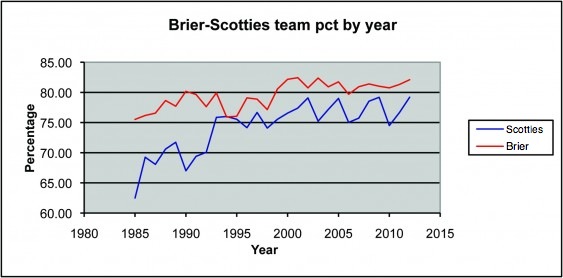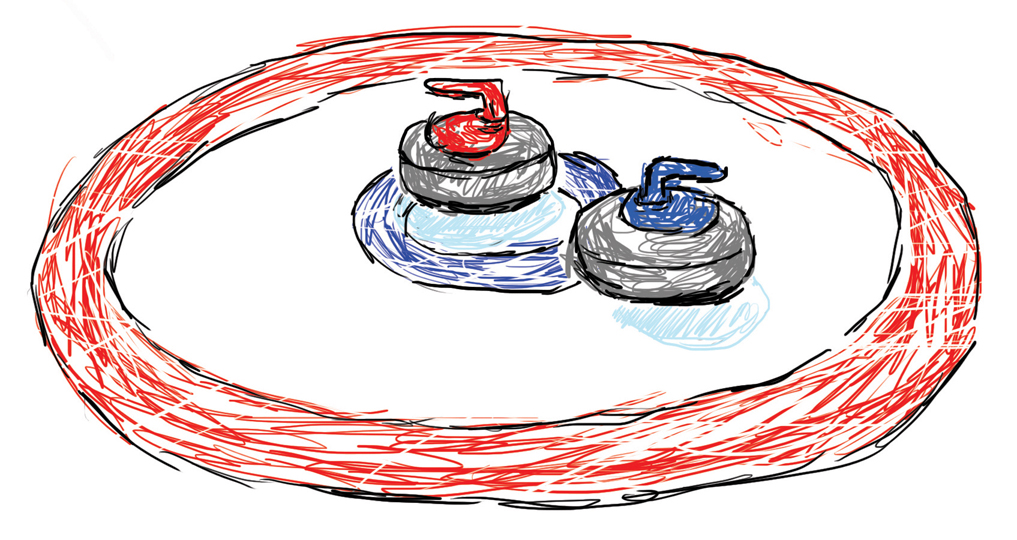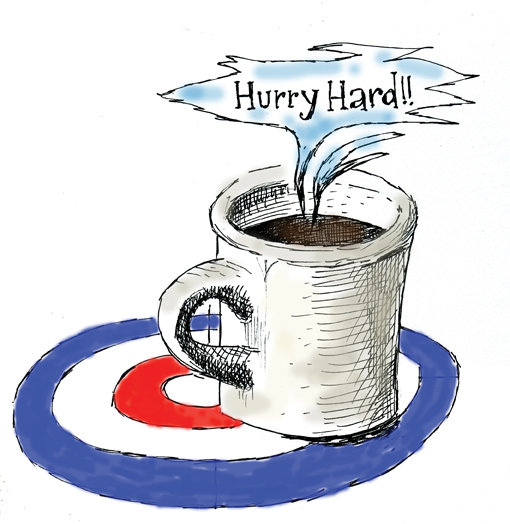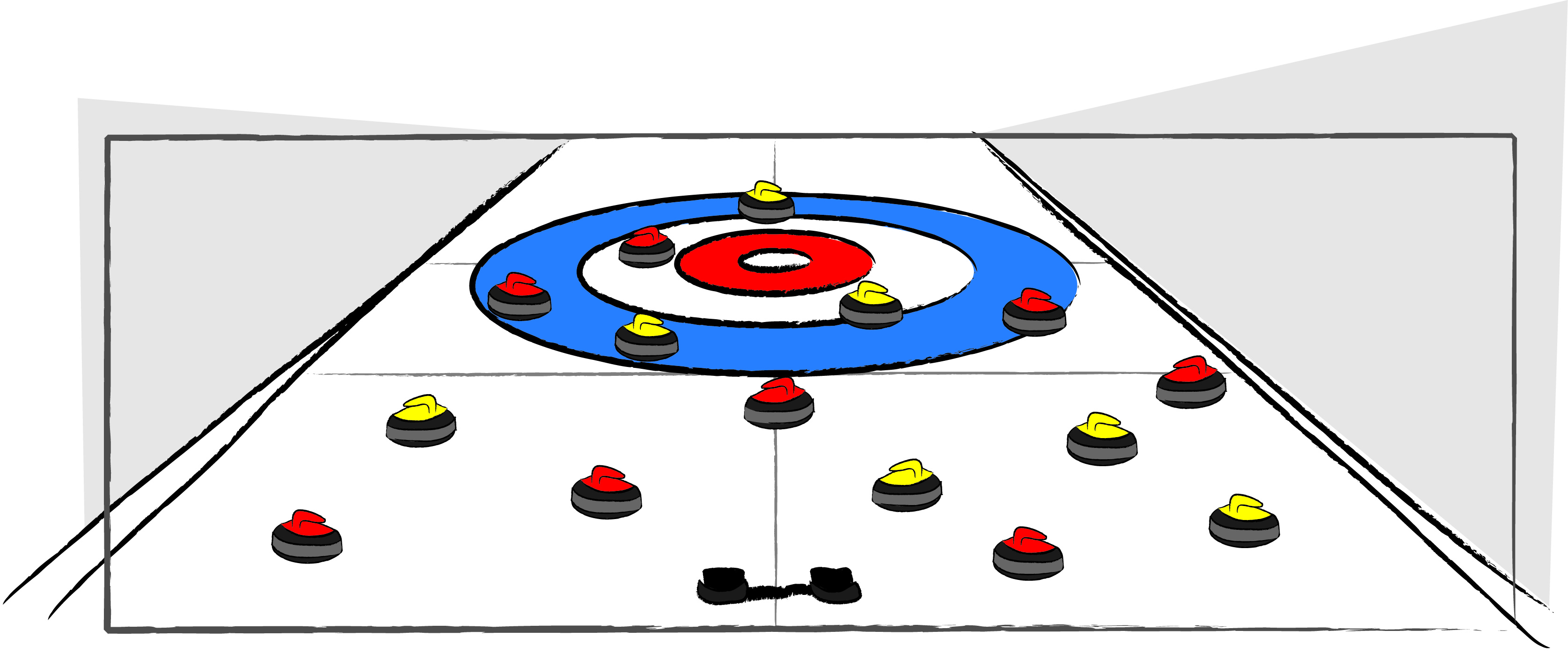The sport of curling has changed a great deal over the last three decades.
Advances in equipment and ice-making, increases in prize money and television coverage — including admission into the Winter Olympic Games — and a significant rule change have all helped boost the sport. But one of the biggest changes in curling has been the marked increase in the skills of elite curlers.
Using only percentages from ranked players, the 2012 Scotties had the best average team shooting percentage (calculated by adding average shooting percentages by position divided by four) ever recorded, with 79.2 per cent per cent. As for the Brier, 2012 was the fourth-highest team average recorded with 82.1 per cent per cent, but very close to the mark set in 2001 (82.44 per cent per cent).
The percentages for the Scotties have increased noticeably over the years. In 1985, the Scotties average team percentage was 62.48 per cent. In the next year’s event, the first time Team Canada curled at the event, the percentage rose to 69.25 per cent per cent. In 1993, partly because of a 10-point increase in lead percentage, the team percentage rose to 75.83 per cent per cent. It was also the year Sandra Schmirler’s rink from Saskatchewan, one of the best all-time, won their first Scotties title.
Since then, average team percentage at the Scotties has been above 75 per cent in all but three years. It appears that womens’ teams have hit a ceiling: with the exception of the leads, who typically have the higher numbers, none of the other average positional or team percentages has ever reached 80 per cent. In the last two Olympic years, the Scotties team percentage dropped by over four points compared to the previous year.
The Brier also has had some interesting numbers over the years. In 1985, the average team percentage was 75.52 per cent and broke the 80 per cent plateau five years later. In 1994, that value was at 75.92 per cent, four points less than the previous year. It was also the first year the free guard zone was instituted at a Brier and difficulties adjusting to the new rule may have been partly to blame. (However, such a drop did not occur at the Scotties.) It was also the only year that the Scotties had a higher percentage than the Brier (the women had 76 per cent). Interestingly, the best average skip percentage for the Brier came in 1990, the only time it was over 80 per cent. Since 1999, the team percentage at the Brier has only gone below 80 per cent once.
Over the past decade, average team percentage at the Brier has stayed within 79-83 per cent. For the Scotties, there is a greater improvement than in the Brier, but also a greater periodicity. Multi-year increases in accuracy percentage averages usually end with a sharp drop (2003, 2006, 2010). Currently, the Scotties are in a two-year upswing. However, percentages depend on the caliber of players and teams at the event plus ice conditions.
It will be interesting to see what the spread and ice sheets show this upcoming year.




